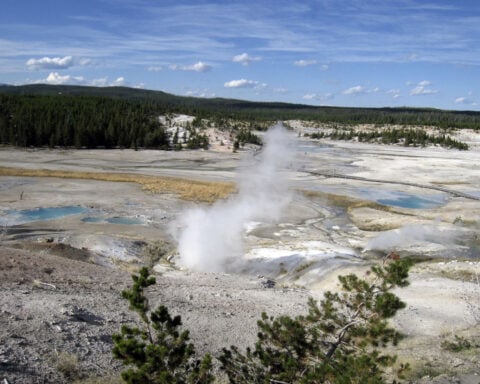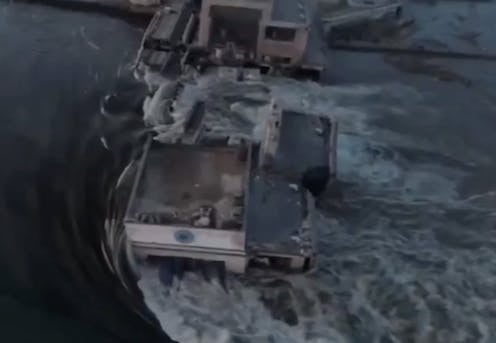
A screen grab shows the Kakhovka Hydroelectric Power Plant after a blast on June 6, 2023.
On the morning of June 6, 2023, thousands of Ukrainians awoke to the sounds of rushing water following an explosion at the Kakhovka dam on the Dnieper River.
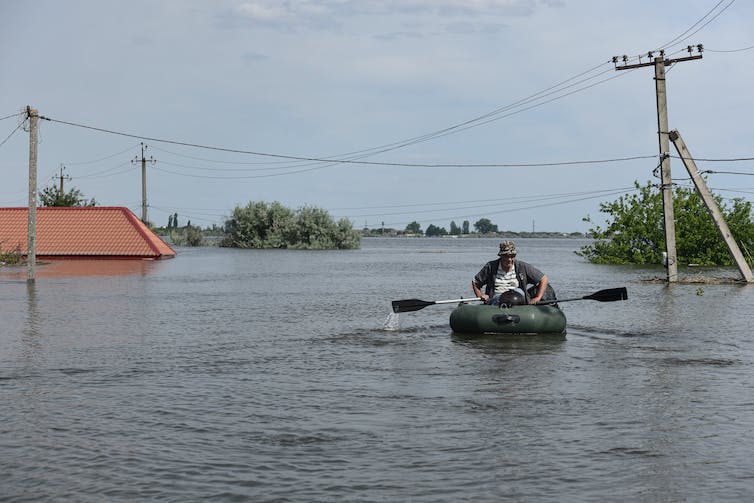
Initially, there were questions on how the dam collapsed or who was to blame, but mounting evidence indicates that the dam was deliberately breached by Russia.
In my view, as a career U.S. special forces officer, the simplest answer is most often correct and provides the most likely explanation for the dam’s destruction. It’s my belief that Russia deliberately destroyed the dam to defend against the Ukrainian counteroffensive that it believed was imminent.
As expected, the flooded river has created an insurmountable obstacle in southern Ukraine, which is allowing Russia to reposition soldiers from Kherson – where the damage is most acute – to other areas to support their defense.
It has also created a massive humanitarian crisis that Ukrainian military officials must resolve while at the same time plan and execute counteroffensives aimed at expelling Russian troops from their country.
An age-old military strategy
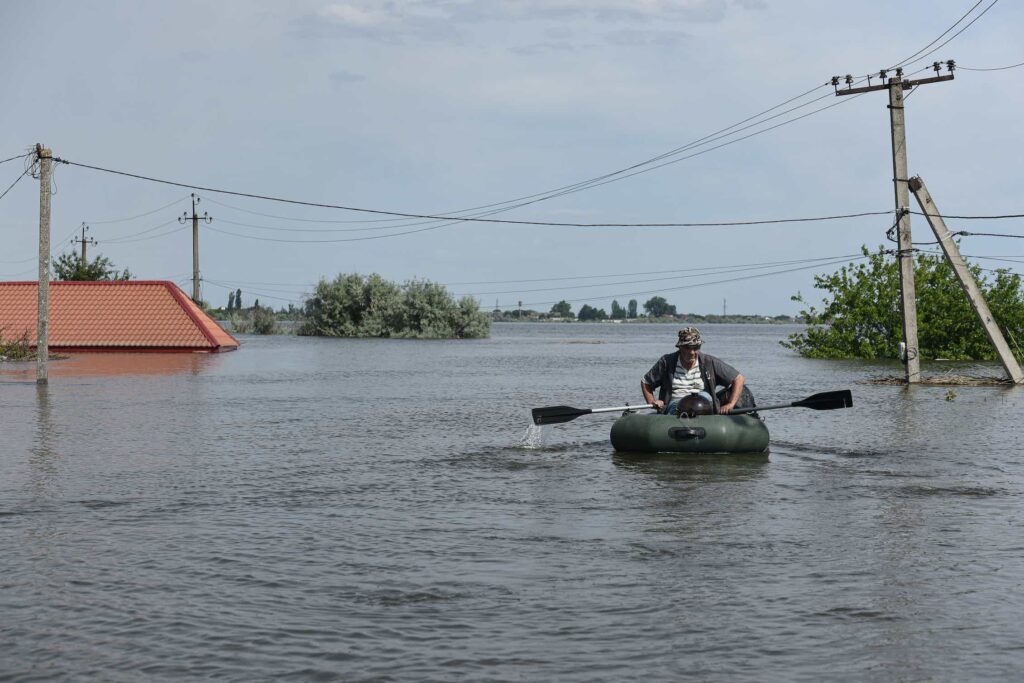
Known as hydraulic warfare, the deliberate flooding of an area during combat is nothing new.
Quite to the contrary, it is an effective defensive technique that dates back hundreds, if not thousands, of years.
From 1584 to 1586, for example, Dutch rebels destroyed seawalls to flood low-lying areas to prevent Spanish invaders from advancing during the Eighty Years’ War.
In another instance, the Chinese military breached levees along the Yellow River in 1938 to slow the Japanese advance.
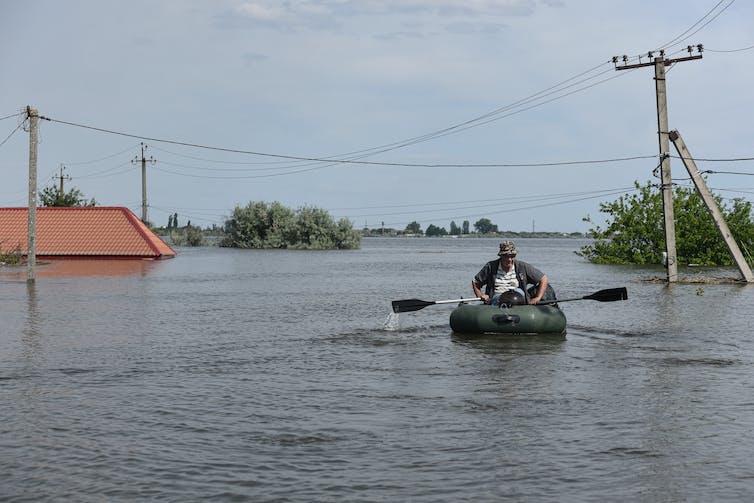
In yet another example, in 1941, Russian secret police blew up the hydroelectric dam on the Dnieper River in Zaporizhzhia, Ukraine, to slow the Nazi advance.
How Ukraine has used the same tactic
In the current war against Russia, the Ukrainian military has also employed hydraulic warfare to successfully defend its capital, Kyiv.
In the opening days of the war in February 2022, Ukrainians breached a dam on the Irpin River – after other methods of controlled flooding failed – to impede the large, mechanized Russian formations advancing on Kyiv from Belarus.
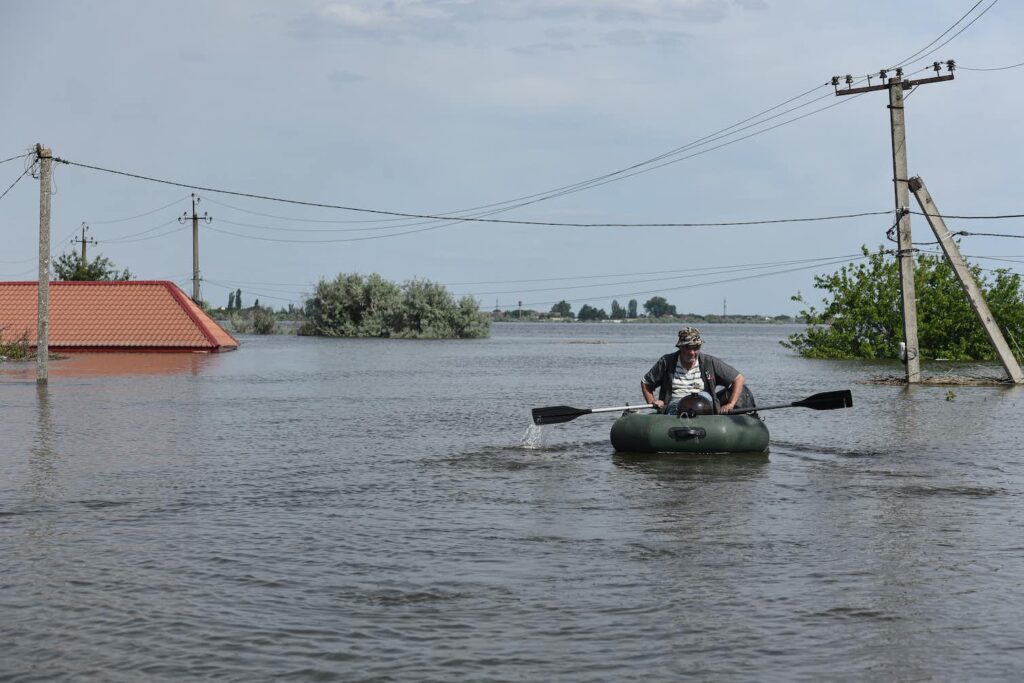
The Ukranians also deliberately flooded the Zdvyzh and Teteriv rivers to make them unfordable and bolster their defense of Kyiv.
Those floods played a critical part in the most important battle of the war to date.
There is nothing inherently inhumane about hydraulic warfare, but when employed, it should meet the constraints of military necessity and proportionality as prescribed by international humanitarian law.
This is where the destruction of the Kakhovka dam by the Russians differs from the dams destroyed by the Ukrainians.
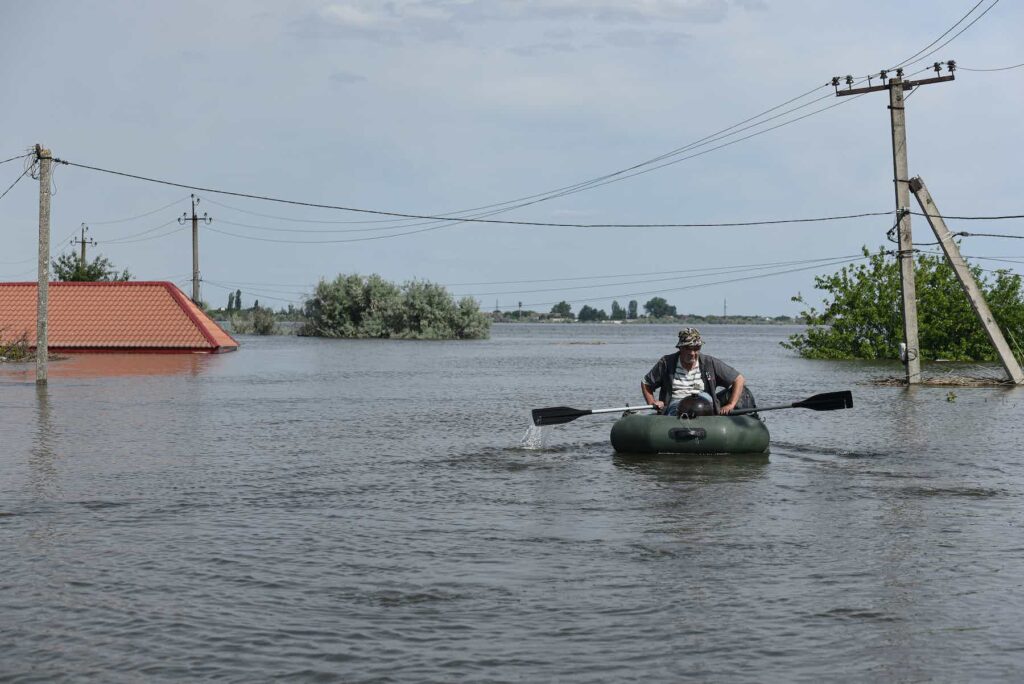
In my view, the Ukrainians conducted a calculated breach that minimized the damage to the dam and caused the necessary flooding of the Zdvyzh and Teteriv Rivers to create an appropriate obstacle.
The destruction of the Irpin dam was fairly limited: 50 of the small village of Demydiv’s 750 homes were destroyed. More important, few have raised concerns about the long-term ecological impact from this military act.
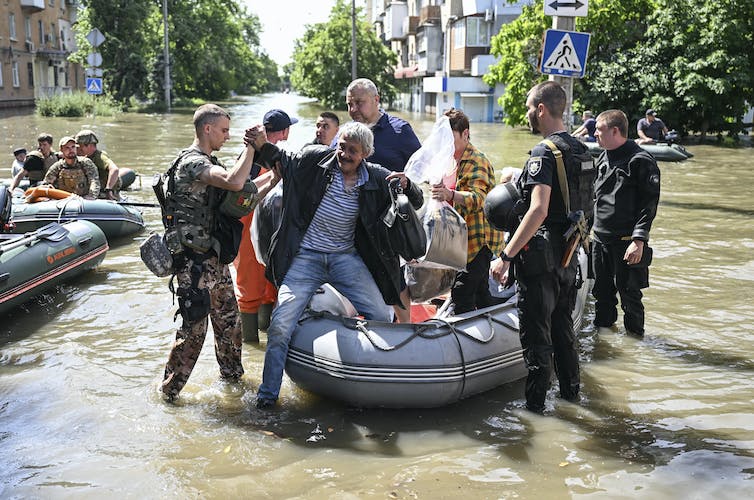
Officials help people on June 7, 2023, after the explosion at the Kakhovka hydropower plant flooded the houses and streets in Kherson, Ukraine.
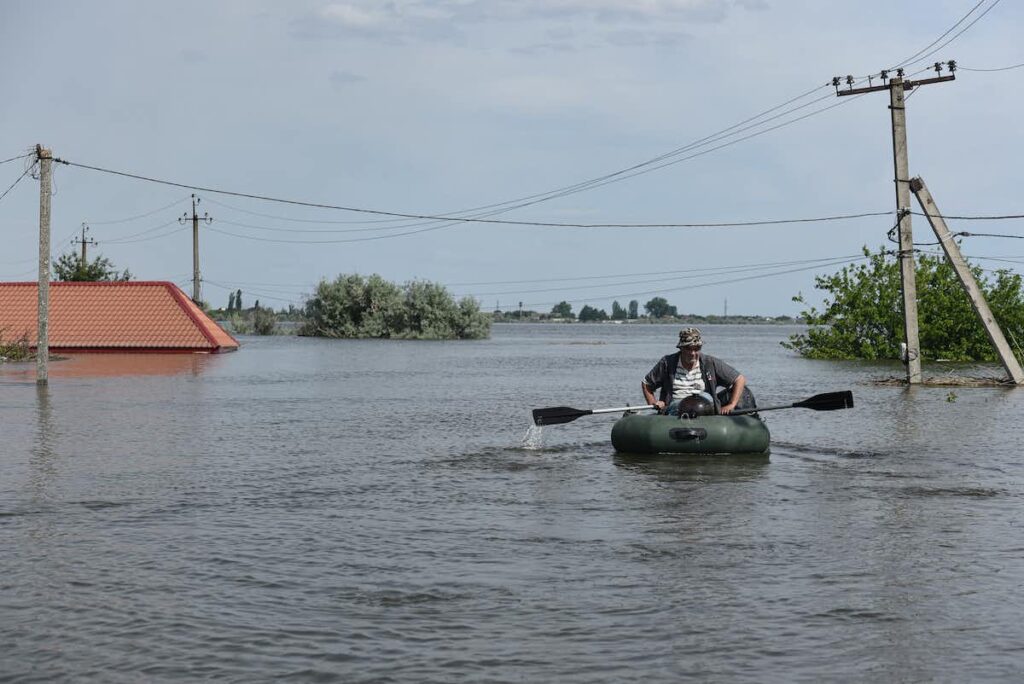
While it is too early to tell the full impact of the Dnieper’s flooding, it is expected to be much higher than the Ukrainian breach of the Irpin – with some military observers questioning the ethics of this destructive act.
Already more than 17,000 people have been affected in the flooding zone, and that could rise to more than 40,000. There is also a threat of floating landmines and an ongoing challenge to provide drinking water to thousands.
How the flooding supports Russia’s defense
After Russia’s monthslong offensive culminated in little more than the seizure of the small city of Bakhmut, Russia has now transitioned to a defensive posture to prevent Ukraine’s much anticipated counteroffensive.
In such a posture, the Russian defense has some advantages.

Defenders fight from fortified positions, whereas attackers must advance from exposed, vulnerable positions while overcoming obstacles, such as flooded streets.
As such, it is a widely accepted rule of thumb that attacking forces must have a 3-to-1 force ratio to defeat a dug-in defender. In other words, for every 100 defenders, attackers will need at least 300 soldiers.
But the offense has its own advantages.
The attacker can choose when and where to conduct the attack and thus mass forces at the point of the attack to achieve this necessary force ratio.
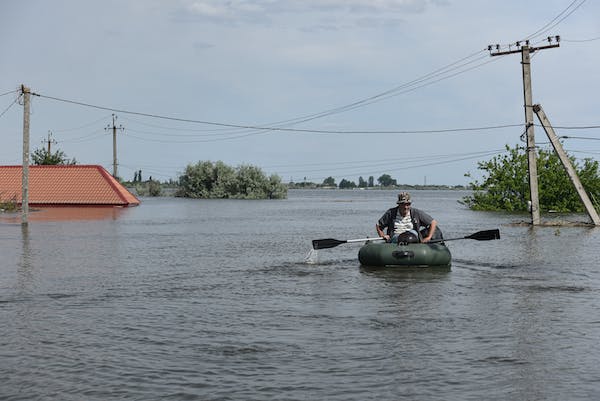
The defender, by contrast, must spread its forces across the battlefield, if it cannot correctly anticipate the point of attack.
Not wanting to tip its hand to when and where the attack will occur, the attacker will often employ deception to confuse the enemy as to where the attack will occur.
Often, attackers will also conduct probing attacks to assess where enemy defenses are weakest and help refine the location for the main attack.
This is likely what was playing out in the weeks immediately preceding Ukrainian President Volodymyr Zelenskyy’s announcement of “counteroffensive actions” on June 12.
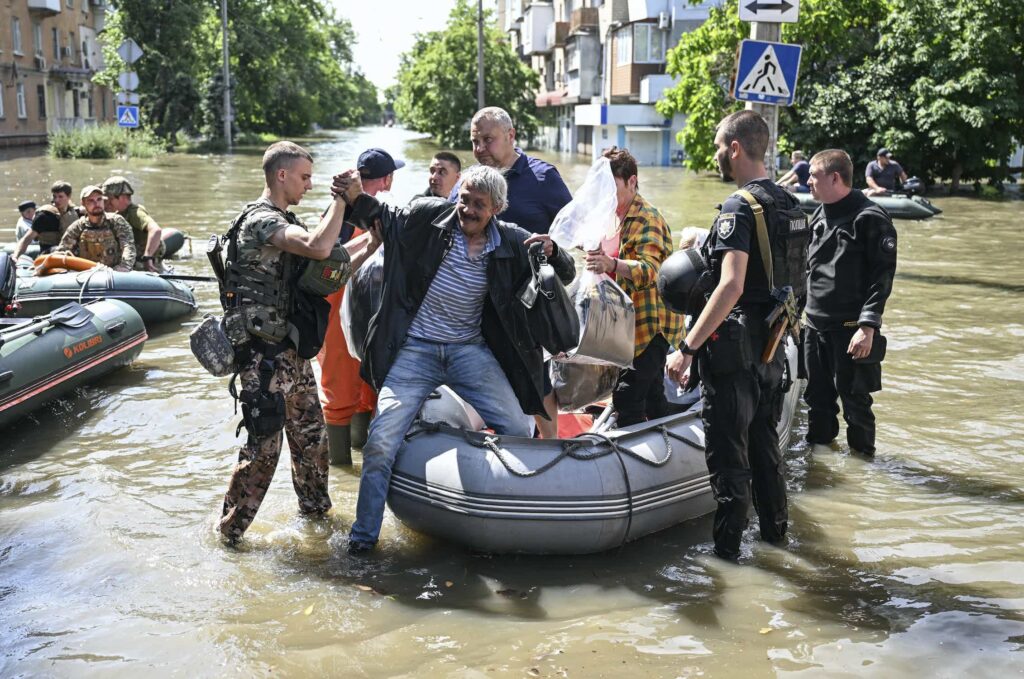
Russia still maintains an advantage when it comes to troop strength, but the advantage is not as overwhelming as it was at the start of the war.
A natural defense
Even with superior numbers, it’s my belief that the Russians cannot mass its forces along the entire defensive line. Nor in my view could they correctly anticipate the location of Ukraine’s main counteroffensive effort.
As a result, deliberately flooding the Dnieper River removes the Kherson Oblast as one likely counterattack location and allows Russia to reposition soldiers defending there into the Zaporizhzhia, Donetsk, and Luhansk oblasts — locations where Ukraine’s main attack is likely to occur.

People were evacuated on June 8, 2023, from the flooded residential areas in the Kherson region following the collapse of the Kakhovka dam.
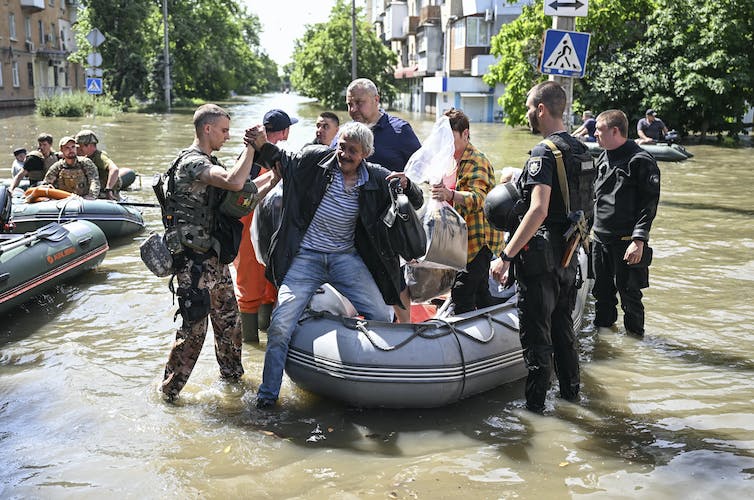
Thus, blowing the dam up was a calculated and militarily wise defensive strategy – even if dubious from the perspective of international humanitarian law.
It also created a humanitarian crisis that Russia no doubt anticipated, and has further leveraged to its tactical advantage.
Dealing with massive human or human-made disasters is hard enough for any nation, let alone a nation fighting for its survival.
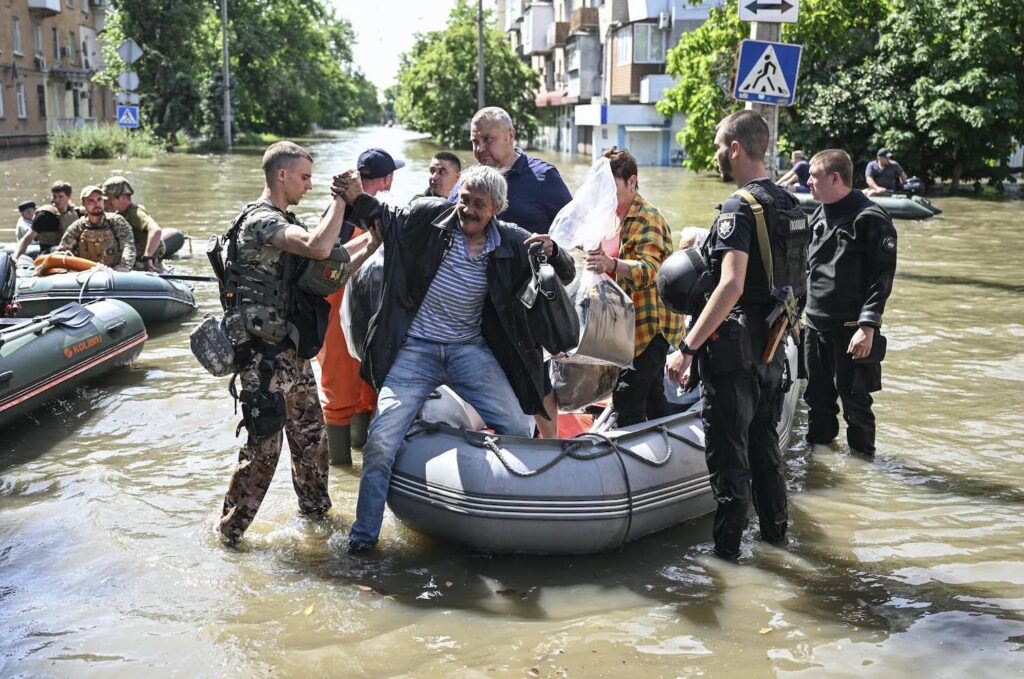
Since the breach of the Kakhovka dam, Ukraine has had to deal with the influx of new aid workers and tens of thousands of people who have lost their homes, both major distractions from its large counteroffensive.
To make things even more challenging, Russia continued to shell the flooded areas to make rescue efforts all the more difficult.
The war is likely to last many more months or years, yet ecological devastation from this most recent human-made flood is likely to last much longer.
More than a year later, the Irpin River remains flooded, and some homes and farmlands have been destroyed or remain unusable.
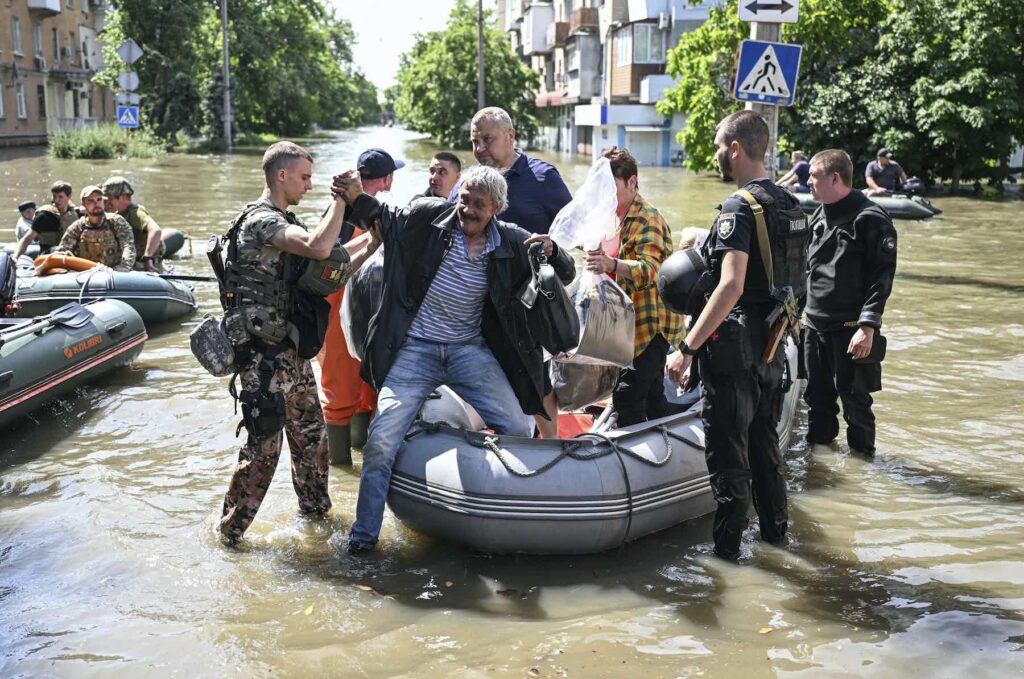
Sadly, the flooding of the Dnieper river will likely be more devastating and last much longer.
Liam Collins does not work for, consult, own shares in or receive funding from any company or organisation that would benefit from this article, and has disclosed no relevant affiliations beyond their academic appointment.

 Trump has begun another trade war. Here's a timeline of how we got here
Trump has begun another trade war. Here's a timeline of how we got here
 Canada's leader laments lost friendship with US in town that sheltered stranded Americans after 9/11
Canada's leader laments lost friendship with US in town that sheltered stranded Americans after 9/11
 Chinese EV giant BYD's fourth-quarter profit leaps 73%
Chinese EV giant BYD's fourth-quarter profit leaps 73%
 You're an American in another land? Prepare to talk about the why and how of Trump 2.0
You're an American in another land? Prepare to talk about the why and how of Trump 2.0
 Chalk talk: Star power, top teams and No. 5 seeds headline the women's March Madness Sweet 16
Chalk talk: Star power, top teams and No. 5 seeds headline the women's March Madness Sweet 16
 Purdue returns to Sweet 16 with 76-62 win over McNeese in March Madness
Purdue returns to Sweet 16 with 76-62 win over McNeese in March Madness





